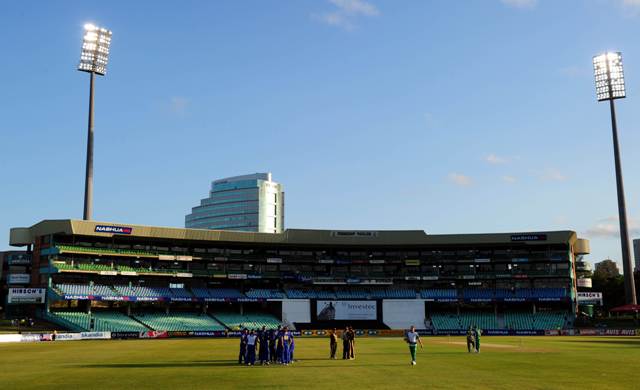The first thing to dismiss is the notion that Kingsmead is affected by the tides 0f the Indian Ocean. It is simply a strip generally favoured by the quickies, but which rewards hard graft.
The pitch is laid slightly below sea level and local folklore maintains that when the tide comes in in the late afternoon, the water table rises, offering unexpected movement to seam bowlers. But, to be fair, the pitch is practically floating. One curator believed that the myth started because the Umgeni river was diverted to accommodate the oval; although, he said, ‘you only have to dig about a metre down to reach water underneath it’.
In real terms, because of its hot, humid, cockroach weather, the air does get muggy which may give some assistance late in the day, just before the thunderstorms roll in.
But don’ t forget, this was the home of the ‘Timeless Test’ of 1939, in which England were 654-5 on day 10, chasing 696 for victory. They had to call it a day because the boat was leaving for England and they had to be on it… there were no collapses there: time and tide waited for no man.
Then again, Kingsmead was privileged to witness Graeme Pollock and Barry Richards in their full pomp and glory in 1970: Pollock stood for 274 runs after Barry Richards had hammered 140 off 164 balls as South Africa piled up 622 to crush Australia by an innings and 129 runs.
More recently, Gary Kirsten slammed 275 against England in 1999.
Kingsmead was also the venue for the first home match, led by Clive Rice, against India. The match ended in a draw, the first of six since that day.
Since readmission, the Proteas have won nine of 21 matches, and lost six.
In the past 10 years, though, they have won three and lost five of the eight played, including England in 2009, which was lost by an innings and 98 runs. The average first-innings score that time is 303, but that is slightly skewed by the West Indian collapse in 2008, in which they scored just 139.
But if we factor that out, then the average first-innings score is 327: not a particularly brilliant display. There have been some big scores coming in the second innings, three being over 500: South Africa beat the West Indies after knocking up 556 in the the second innings of the match; England piled up 574 in reply to South Africa’s 343 in 2009 and South Africa accumulated 500 to counter India’s 334 in 2013.
So, win the toss and…? South Africa gained two of their three wins batting second. But only once (against the West Indies) did they choose to do so. Subsequently, India chose to bat in 2013 and after posting 334, saw the Proteas run up that 500.
So basically, it’s back to who wants it more, and who is prepared to put in the graft.
Forecast: Cloudy, with a good chance of showers on day one, with humidity at 81%.







